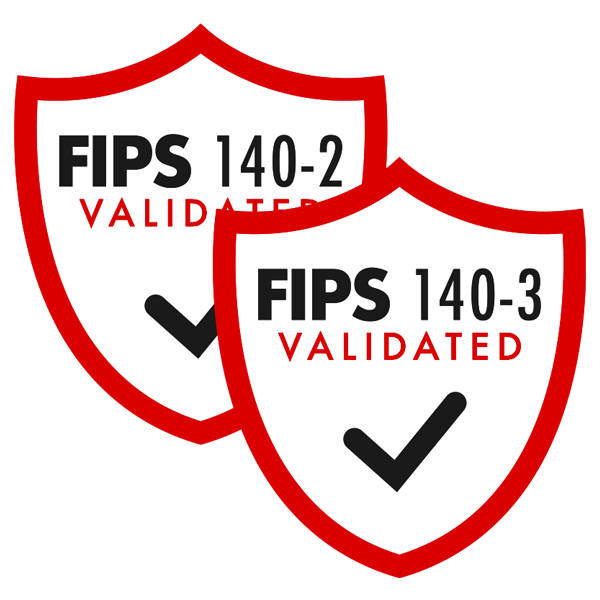60 Series SOM with WiFi 802.11ac and Bluetooth 5.1

Overview
Our Most Secure Wireless Sub-System EVER
Ezurio’s 60 Series SOM brings all of Ezurio’s industry competence and capabilities into one solution. The SOM provides:
- Superior enterprise-class Wi-Fi performance
- Onboard cryptographic engine
- Chain of Trust Architecture with layers of security to mitigate attacks.
- CVE checking and penetration testing
- Reduced time-to-market
- Fully featured development kit for designing with the full suite before integrating with your device.
The 60 SOM is the ideal system on module for devices that require superior connectivity. Combining the Sterling 60 series module and Summit Software Stack, the SOM provides superior wireless connectivity in harsh RF environments. It also supports dual-Ethernet and CAN bus for wired connectivity. The 30mm x 30mm form factor and variety of interfaces allow the 60 Series SOM to be used as a wireless bridge, main processing unit, or IoT gateway.
Supports the latest WPA3-Personal, WPA3-Enterprise, and WPA3-Enterprise SuiteB 192-bit security standards.
Buy Now
Ezurio is an NXP Gold Partner
Ezurio is honored to be approved as an NXP Gold Partner! We look forward to working with the NXP team to deliver the solutions our customers need in an ever changing wireless future. Please follow the link for more information.


Summit Suite
Manage every part of the security lifecycle.
Find the options you need in the Summit Suite range.

FIPS Cryptographic Modules
Learn More
Chain of Trust Device Security
Learn More
Software Vulnerability Monitoring and Remediation
Learn More
Custom Solutions
Reduce design risk and accelerate your time to market with Ezurio's custom Single Board Computers (SBC). We offer:
- A hand-in-hand partnership approach.
- Design your board your way.
- Lower production costs by choosing your required components.
- Industry leading hardware and software.

Specifications
Bluetooth 5.1
Part Number
| Price @ 1k
| Antenna Type
| Chipset (Wireless)
| Description
| Frequency Range (Max)
| Frequency Range (Min)
| Frequency Range 2 (Max)
| Frequency Range 2 (Min)
| Logical Interfaces
| OS/Software
| Product Type
| System Architecture
| Technology
|
|---|---|---|---|---|---|---|---|---|---|---|---|---|---|
| N/A | External | NXP 88W8997 | 60 Series SOM using 1 Gb LPDDR2 RAM and 2 Gb NAND flash | 2495 MHz | 2400 MHz | 5825 MHz | 5150 MHz | Ethernet, Serial, USB, Micro SD, CAN, I2C | Summit Linux | Embedded Module, SOM | Hostless | 802.11abgn, 802.11ac, Bluetooth 5.1, Dual Mode (Classic + BLE) | |
| N/A | External | NXP 88W8997 | 60 Series SOM using 2 Gb LPDDR2 RAM and 4 Gb NAND flash | 2495 MHz | 2400 MHz | 5825 MHz | 5150 MHz | Ethernet, Serial, USB, Micro SD, CAN, I2C | Summit Linux | Embedded Module, SOM | Hostless | 802.11abgn, 802.11ac, Bluetooth 5.1, Dual Mode (Classic + BLE) | |
| N/A | LCD Touchscreen for the 60 Series SOM Development Board (add-on) | SOM, Accessory | |||||||||||
| N/A | External | NXP 88W8997 | 60 Series SOM using 1 Gb LPDDR1 RAM and 2 Gb NAND flash | 2495 MHz | 2400 MHz | 5825 MHz | 5150 MHz | Ethernet, Serial, USB, Micro SD, CAN, I2C | Summit Linux | Embedded Module, SOM | Hostless | 802.11abgn, 802.11ac, Bluetooth 5.1, Dual Mode (Classic + BLE) | |
| N/A | External | NXP 88W8997 | 60 Series SOM using 2 Gb LPDDR1 RAM and 4 Gb NAND flash | 2495 MHz | 2400 MHz | 5825 MHz | 5150 MHz | Ethernet, Serial, USB, Micro SD, CAN, I2C | Summit Linux | Embedded Module, SOM | Hostless | 802.11abgn, 802.11ac, Bluetooth 5.1, Dual Mode (Classic + BLE) |
Documentation
Product Brief 1 total
Name |
Part |
Last Updated |
|---|---|---|
| Product Brief - 60 Series SOM | All | 04/16/2025 |
Datasheet 1 total
Name |
Part |
Last Updated |
|---|---|---|
| Datasheet - 60 Series SOM | All | 04/16/2025 |
Application Note 1 total
Name |
Part |
Last Updated |
|---|---|---|
| Application Note - Guidelines for Replacing Antennas | All | 03/20/2025 |
Software 1 total
Name |
Part |
Last Updated |
|---|---|---|
| Release Packages - 60 Series SOM | All | 03/09/2021 |
Documentation 5 total
Name |
Part |
Last Updated |
|---|---|---|
| EOL Notice - 60 Series SOM - 453-00003 | All | 01/30/2023 |
| EOL Notice - Select 60 Series SOM Part Numbers - 453-00004 - Nov 2023 | All | 11/21/2023 |
| PCN 8B-2023 - 45, 50, and 60 Series SOMS | All | 08/25/2023 |
| PCN 10E-2021 - SOM60 | All | 11/30/2021 |
| User Guide - 60 Series SOM DVK | All | 04/16/2025 |
Certification 9 total
Name |
Part |
Last Updated |
|---|---|---|
| AS/NZS Certifications SU60 SOMC | All | 10/06/2020 |
| EU Certifications - SU60-SOMC | All | 09/13/2024 |
| FCC Certifications SU60 SOMC | All | 10/28/2020 |
| ISED (Canada) Certifications SU60 SOMC | All | 10/06/2020 |
| ISED ICES-003 Issue 7 Declaration of Compliance | All | 05/18/2021 |
| Japan Certifications SU60 SOMC | All | 02/25/2019 |
| Korea Certifications SU60 SOMC | All | 04/02/2024 |
| Regulatory Information - 60-SOM | All | 04/28/2022 |
| RoHS 3 Compliance - Wi-Fi Products | All | 03/06/2025 |
Technical Drawings 5 total
Name |
Part |
Last Updated |
|---|---|---|
| 3D Model - 60 Series SOM | All | 02/19/2021 |
| Schematic - DVK-SU60-SOMC | All | 06/03/2021 |
| Schematic - DVK-SU60-SOMC with LCD | All | 06/03/2021 |
| SU60-SOMC PCB footprint (DXF and Altium format) | All | 12/23/2021 |
| SU60-SOMC SCH symbol (Altium format) | All | 12/23/2021 |
Become an Ezurio Customer to Gain Exclusive Access to Our Design Experts
- Antenna Scans
- Antenna selection and placement
- Custom antenna design
- Worldwide EMC testing / certifications
- Embedded RF hardware / firmware design
- Cloud architecture and integration
- Mobile application development
- Product & Industrial Design
Distributors
| Distributor | Phone Number | Region | Website |
|---|---|---|---|
| Arrow Electronics | 1-855-326-4757 +44 2039 365486 |
APAC, North America, South America, EMEA | Website |
| Braemac Australia, New Zealand, South East Asia | +61 2 9550 6600 +64 9 477 2148 |
APAC | Website |
| DigiKey | 1-800-344-4539 |
North America, South America, APAC, EMEA | Website |
| EBV Elektronik | EMEA | Website | |
| Farlink Technology China, Hong Kong | +86 13266922199 |
APAC | Website |
| Farnell | 1-800-936-198 +44 3447 11 11 22 |
EMEA | Website |
| Future Electronics | 1-800-675-1619 1-514-428-8470 |
North America, South America, APAC, EMEA | Website |
| Glyn | +49-6126-590-0 |
EMEA | Website |
| Hy-Line Germany Only | +49 89 614 503 0 |
EMEA | Website |
| Jetronic China, Hong Kong and Taiwan | 852-27636806 |
APAC | Website |
| M2M Germany | +49-6081-587386-0 |
EMEA | Website |
| Martinsson | +46 8 7440300 |
EMEA | Website |
| McCoy South East Asia | +65 6515 2988 |
APAC | Website |
| Mouser Electronics | 1-800-346-6873 +44 1494 427500 |
North America, South America, APAC, EMEA | Website |
| RS Components | +852-2421-9898 +44 3457-201201 |
North America, South America, APAC, EMEA | Website |
| Ryoyo Japan | +81-3-3543-7711 |
APAC | Website |
| Solsta UK Only | +44 (0) 1527 830800 |
EMEA | Website |
| Supreme Components International India, South East Asia | +65 6848-1178 |
APAC | Website |
| Symmetry Electronics | 1-866-506-8829 |
North America | Website |
| Tekdis Australia and New Zealand | +61 3 8669 1210 |
APAC | Website |
| Telsys | +972 3 7657666 |
EMEA | Website |
| WPG | +44 1628 958460 |
EMEA | Website |
 Laird Connectivity and Boundary Devices are now Ezurio
Laird Connectivity and Boundary Devices are now Ezurio





/filters:background_color(white)/2020-08/60-SOM-DVK.png)
/filters:background_color(white)/2024-11/NANOBLADE1.png)
/filters:background_color(white)/2024-12/EMF2471.png)
/filters:background_color(white)/2024-03/FlexPiFa2-5Ghz_LC.png)
/filters:background_color(white)/2024-10/FlexMIMO-transparent-border2.png)
/filters:background_color(white)/2024-10/60%20Som%20Render%20333.png)
/filters:background_color(white)/2020-08/60-SOM-LCD-lg.png)
